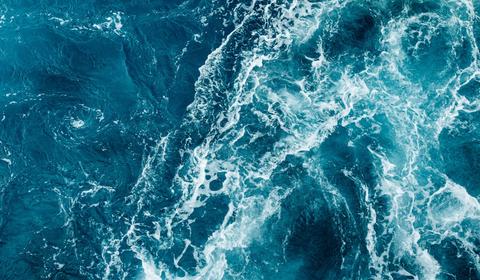
Understanding the power of water with Computational Fluid Dynamics and Vortex Motion Analysis
There’s no such thing as too much stability. When it comes to moored offshore assets, operators’ main concern is to achieve safety and steadiness under any environmental condition. The purpose of Vortex Motion Analysis (VMA) is to study the effects of water on and around a vessel or platform. VMA includes assessing the likelihood of a platform’s mooring system being subjected to undesirable effects such as fatigue damage.
Accurate VMA requires complex 3D models that comprehensively map the vortex formation. The best way to produce these is through Computational Fluid Dynamics (CFD). CFD-based VMA provides owners with the information they need both to select the most appropriate mooring system and to predict their maintenance needs
Vortex-Induced Motion: why, when and how?
Vortex-Induced Motion (VIM) is a particular case of Vortex-induced Vibrations (VIV), relating to significant motion in regard to structure dimensions. It occurs when a floating structure, such as a rig or vessel, moored to the seabed or towed, is subjected to water turbulence. The water flow and the forces created, for example, due to current, can create instabilities that may damage the platform or vessel in question. Mooring systems are used to hold such structures in place and bring them back to their intended position when the movement of water surrounding them causes them to shift. This pull/pull-back effect naturally results in fatigue and weakening of the mooring system over time, but these effects can be mitigated through a judicious choice of mooring system.
The mooring systems used to attach floating structures are designed with a certain margin of tension taking into account their need for a degree of freedom of movement to prevent lines from breaking. It is crucial that this margin be calculated correctly and that mooring lines be adapted to surrounding conditions and induced forces. Inappropriate mooring systems will wear out, leading to higher instances of fatigue.
VMA is a way of mapping how water will flow around a structure of a specific size and shape. It helps predict the impact that the motion of water will have both on the structure and its specific mooring system and load.
Thanks to this detailed analysis, asset owners can choose the right mooring system for their structure and the conditions it faces. This means they can extend its lifecycle, reduce maintenance needs, improve safety and cut costs in the long-term. In addition, during VMA, mooring lines can be remodeled to demonstrate how different systems would cope with different loads.
An overview of CFD
Computational Fluid Dynamics is a branch of numerical simulation in fluid dynamics based on advanced high-accuracy tools. It provides a method for mapping the movement of water, from currents, waves and other forces, around an object. It identifies how water movements interact with the platform or vessel with six degrees of freedom (three translations and three rotations).
CFD uses powerful computers to perform complex calculations that simulate the free flow of a fluid, including any free surface. By multiplying and layering points of analysis, CFD enables the creation of a comprehensive 3D model of fluid flow and the motions of a structure it surrounds.
In the context of VMA, CFD is often used in conjunction with mesh morphing to provide an incredibly accurate picture of how water moves and how it interacts with objects. State-of-the-art mesh morphing creates a computed mesh around a structure. This mesh will adapt to the flow of water – automatically refining where needed – so as to keep accuracy at the highest level.
There are currently two methods used for CFD mapping:
- Reynolds-Averaged Navier–Stokes Equations (RANSE) is the standard, reasonable-cost approach. It is used to model turbulence flow through eddy viscosity models of turbulence.
- Detached Eddy Simulation (DES) is more complex and requires greater knowledge. It is, therefore, more costly and less widely used. It has the advantage, however, of providing more extensive results and can be extremely accurate if performed properly.
The wider applications of CFD
CFD has numerous other applications in marine analysis. It can provide vital data for everything from maneuvering analysis to ship hull resistance and powering calculations, including hull-propeller interaction and hull form optimization. It can also be used to calculate airflow in critical spaces and wind and current coefficients for dynamic positioning analysis and to resolve unique problems such as liquefied natural gas release. Each application of CFD requires its own numerical model, but the methodology does not change.
BV Solutions M&O: crunching the numbers to add value
BV Solutions M&O’s experts have been working with complex CFD computations for more than 15 years, thus garnering an industry-leading level of know-how and experience in the area. This enables us to offer high-level analysis for a number of applications. We have successfully mastered and applied the DES technique and, as a result, are able to apply it to a variety of fields linked to fluid dynamics, such as aerodynamics.
As ever, BV Solutions M&O is committed to developing our offer and adapting it to meet our clients’ needs. Years of experience with CFD have put us in a perfect position to offer clients this cutting-edge methodology both for VIM and other applications. By working in close partnership with clients and offering the highest quality analysis, we contribute to boosting the efficiency, safety and reliability of their projects.
Deputy of Fluid Dynamics Department
BV Solutions M&O
Bureau Veritas Solutions’ comprehensive understanding of DES and CFD techniques—as well as our practical experience—enables us to apply these powerful methodologies to numerous applications involving fluid dynamics, and offer their multiple benefits to clients in a wide variety of fields.
